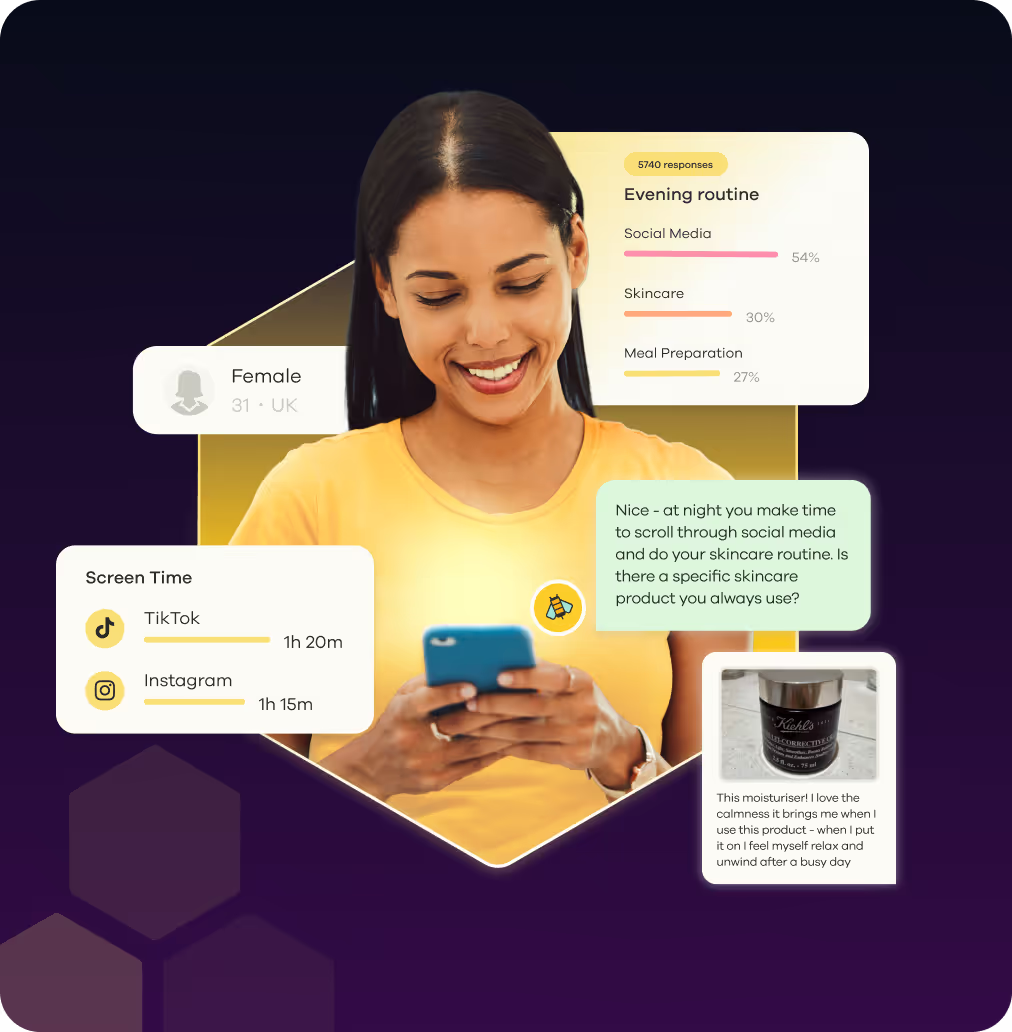What is a taxonomy?
At its core, a taxonomy is a system used to organise, classify, and retrieve data. It’s the backbone of many everyday tools we use, from locating eggs in a supermarket to receiving tailored Netflix recommendations. Essentially, taxonomies help structure data in a way that makes it easier to understand and access.
To gain deeper insights into the role of taxonomies in unearthing consumer insights, we spoke to our in-house expert Daisy Morrison, Product Taxonomy Manager at Streetbees.
We discuss why taxonomies are important in the market research space, the best practices for building them and how we’ve built best-in-class taxonomies here at Streetbees - providing a comprehensive guide to understanding and building taxonomies in your organisation.
Why are taxonomies important?
In market research, a well-designed taxonomy ensures that data is both precise and actionable. A good taxonomy for market research must meet three key criteria:
- Mutually exclusive labels. No overlapping terms, no duplications, and no vague labels.
- Collectively exhaustive coverage. It should cover everything you could reasonably expect to come up within your data set.
- Integrating customer-centric terminology. Ensures the language is matched to the clients needs. Clients know their industry terminology back to front, so it's important for taxonomies to reflect that in order for the data and insights to be as actionable as possible.
This structure ensures comprehensive and precise data, allowing for accurate analysis and insights. Daisy explains, “A good taxonomy is essential for ensuring that our data is both accurate and actionable. By having mutually exclusive and collectively exhaustive labels, we can guarantee that we’re capturing all relevant information without any overlap or ambiguity.”
What sets Streetbees’ taxonomies apart?
We leverage our extensive experience to craft taxonomies that turn qualitative conversations into quantifiable and actionable insights. We’ve honed our approach over nine years, delivering 35M+ conversations and 3,000+ projects for 185+ world-leading organisations. This expertise has been integrated into our AI-powered system, which now generates best-in-class taxonomies, blending human expertise with advanced AI automation. We have built SBX into an automated end-to-end product that not only tailors each taxonomy to its research use case, but also offers flexibility. This means clients will soon be able to tap into that knowledge, whilst influencing how their data is labelled, ensuring that their insights are as relevant and useful as possible.
Daisy highlights, “We know bespoke insights are important, so our taxonomies are unique to each research use case. We’re also building flexibility into our product, with an end goal of enabling clients to have the final say in how their data is labelled, helping them cut their data in the most useful way for their business.”
In summary, while taxonomies are crucial for organising and making sense of data, Streetbees stands out by offering a bespoke and fully automatic approach, ensuring our clients get insights that are perfectly tailored to their needs.
About Daisy

Daisy Morrison is Streetbees' Product Taxonomy Manager. After joining the Operations Team in 2018, she transitioned through roles in Field and Processing to eventually take on Taxonomy, founding the team and growing them alongside our expanding list of clients and categories. With the transition to an AI-led product, she now works on ensuring our SBX product is grounded in best-in-class taxonomy practices, building tools and features that support optimum data classification.





